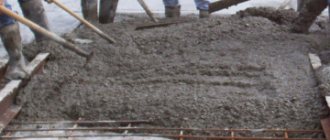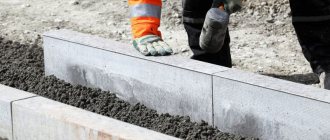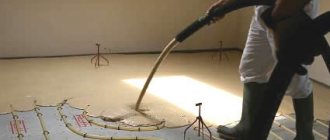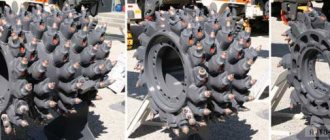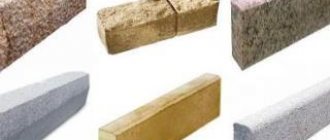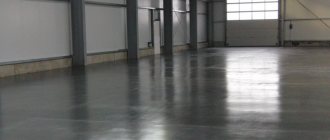Briefly about the main thing
Task
Using videos shot by road laboratories, automate the manual labor of operators to identify defects: cracks, holes, patches, etc.
Solution
- Software for creating training samples
- Software for training a defect recognition model based on Torch, C++, CUDA
- Algorithm for fast video recognition by a model with a speed close to FrameRate
- Web panel for monitoring and managing a GPU cluster: training models, running defect recognition, viewing results
- More than 6,000 km have already been automatically recognized. roads
Repair and maintenance of road surfaces. Basic terms and definitions.
4.1. Main types of deformation and destruction
4.1.1. Under the influence of traffic in unfavorable climatic and soil-hydrological conditions, the main operational indicators of the road deteriorate - the smoothness and adhesion properties of the roadway surface, the strength of the road structure. This manifests itself in the form of various potholes, subsidence, breaks, cracks, waves, shifts, and rutting on the surface of the coating.
4.1.2. Cracks are the most common deformation of road surfaces with flexible pavements. They provoke the appearance of secondary crescent-shaped cracks and the subsequent appearance of potholes. Through cracks (mainly temperature cracks) open more and more over time and contribute to a decrease in the strength of the road structure.
4.1.3. Transverse and longitudinal oblique cracks in a cement concrete pavement are a type of deformation that depends on many factors (delay in cutting joints, insufficient depth, insufficient slab thickness, increased slab dimensions, unsatisfactory condition of the subgrade, etc.).
4.1.4. Pavement subsidence is a smooth vertical subsidence without the formation of cracks as a result of compaction deformations of the subgrade soils and the materials of the structural layers of road pavements.
4.1.5. Rutting is a distortion of the transverse profile of the pavement. It arises due to the appearance of residual deformations in the working layer of the subgrade, non-cohesive layers of the base and the coating itself. Under the influence of movement, residual deformations are summed up, which is accompanied by an increase in the depth of the rut and the height of the overhang of the coating along the edges of the rut.
4.1.6. A decrease in the strength of a non-rigid road structure leads to the appearance of a network of cracks, rutting, potholes, subsidence and breaks. A decrease in strength may be associated with waterlogging of the subgrade soils, silting of the lower layer of the road pavement base, cracking of cohesive layers of the road pavement, and a combination of the above processes.
4.1.7. Abrasion of asphalt concrete pavement is the process of reducing its thickness under the influence of the wheels of moving vehicles in combination with the influence of unfavorable climatic conditions.
4.1.8. Loss of roughness - insufficient resistance to movement (adhesion coefficient is lower than required) as a result of the polishing process of stone coating materials, “sweating of bitumen”, and the formation of a film (layer) of materials with a low adhesion coefficient on the coating.
4.1.9. Peeling of the surface of a cement concrete coating is the destruction of the surface to a depth of up to 30 mm due to the peeling of thin films and flakes of the material as a result of insufficient frost resistance of concrete, violation of construction technology, and the use of de-icing reagents.
4.1.10. Potholes are local destruction of the surface of the coating in the form of depressions of various shapes with sharply defined edges. They are a consequence of the formation and development of a network of cracks, the action of a tire with spikes, violations of work technology, and insufficient strength of the coating.
4.1.11. Breaks - destruction of the full thickness of the road pavement in individual sections of different areas, cracking of the pavement into individual blocks with subsidence of part of them as a result of a sharp decrease in the strength of the roadbed, insufficient strength of the road pavement, and exposure to abnormal loads.
4.1.12. Violation of the evenness of the cement concrete pavement - violations in the concreting technology, bulging of the pavement in expansion or compression joints, rocking of slabs, formation of distortions of slabs in the longitudinal and transverse directions as a result of structural violations, exposure to non-design loads and traffic intensity, violation of the strength of the base and subgrade, etc. d.
4.1.13. Chipping of edges and destruction in the area of seams of cement concrete pavements - local destruction due to clogging of the seams with solid objects, lack of sealant in the seams, poor quality of concrete, etc.
4.1.14. A “comb” on a coating is a violation of evenness in the form of alternating transverse protrusions and depressions with smooth outlines of transitions. It is a consequence of the occurrence of unacceptable shear stresses in the coating material, low shear resistance of the coating material, exposure to elevated positive temperatures, and increased humidity of the coating material (roads with transitional and lower types of coatings).
4.1.15. Dust production is the destruction of the coating surface with the formation on it of a layer of finely dispersed material (particles less than 1 mm), formed under the influence of temperature, water and the wheels of moving cars.
(extract from Methodological Recommendations for the repair and maintenance of public roads dated March 17, 2004 N OS-28/1270-is)
Long roads, big problems
As they say, there are two main problems in Russia, and one of them is roads. According to Wikipedia, the total length of the Russian road network is 1,396,000 km. Russia ranks fifth in the world in terms of the length of its road network. Taking into account the length and not always favorable climatic conditions, the task of maintaining the good condition of the entire Russian highway network, to put it mildly, is non-trivial. It is important to understand that this problem requires a systemic solution. Investing in a large number of disparate repairs is managing the symptoms, not treating the disease.
The systems approach assumes that at the beginning we must understand the problem: what is the condition of our roads, which roads require repair first? Let's give an example: let there be two roads that require repair. A detailed diagnosis is carried out, and as a result it is concluded that the cost of repairing both areas is approximately the same at the moment. Another conclusion from the diagnostic results may be that in a year it will take ten times more money to repair the first road than to repair the second. Such a development of events can be predicted as a result of a detailed analysis of the structure and nature of damage to the roadway. Thus, in resource-limited settings, diagnosis is the cornerstone.
Figure 1. Road laboratory
Fig 2. Example of a video frame from the laboratory
Who is responsible for the poor condition of the roads?
Poor condition of the road surface and lack of proper lighting often cause road accidents, damage to vehicles, and harm to the life and health of citizens.
What is the reason for this state of affairs? Do citizens have the right to compensation for damage caused by poor road conditions? About this interview with the prosecutor of Neryungri, senior justice adviser Andrei Orlov .
— Andrey Yuryevich, what is the current state of the roads in the Neryungri district?
— In the spring and early summer, the thawing process takes place, roads are cleared of snow cover, the top layer of soil thaws, holes and potholes appear. Therefore, the condition of the roads leaves much to be desired. In the current conditions of self-isolation, there are fewer vehicles and people on the street, but given the climatic characteristics of our region, preparatory work is being carried out in the spring; work on repairing roads begins only in the summer.
— What is meant by road maintenance?
— Relations arising in connection with the use of highways and the implementation of road activities are regulated by Federal Law No. 257 of November 8, 2007 “On highways and road activities in the Russian Federation and on amendments to certain legislative acts of the Russian Federation.”
In accordance with Article 3 of this law, the maintenance of a highway is understood as a set of works to maintain the proper technical condition of the highway, assess its technical condition, as well as organize and ensure road safety.
The maintenance of highways is carried out in accordance with the requirements of technical regulations.
Since September 2020, the updated GOST R 50597 2017 has been in force in Russia (approved by order of the Federal Agency for Technical Regulation and Metrology dated September 26, 2017 number 1245-st), which regulates the permissible size of road defects and the time frame for eliminating damage to the pavement. Thus, the pit can have a length of no more than 15 cm, a depth of no more than 5 cm, and an area of no more than 60 square meters. see. If any of the parameters is exceeded, the motorist who falls into the hole has the right to compensation from the road workers. In addition, the law also regulates a clear time frame for repairing damage to the pavement: from 1 to 12 days, depending on the category of the road.
GOST also establishes the permissible track depth and length - 2 cm and 7 meters, respectively, on a section of a traffic lane 100 meters long. Ruts should be eliminated within 5 to 14 days.
— Who should be responsible for maintaining roads?
— According to federal legislation (number 257-FZ), highways can be in federal ownership, the property of constituent entities of the Russian Federation, municipal property, as well as in the ownership of individuals or legal entities. The latter include roads built by individuals or legal entities at their own expense on land plots provided to them, or roads transferred into the ownership of such persons in accordance with the law.
Federal Law No. 196-FZ “On Road Safety” establishes that the responsibility for ensuring compliance of the condition with established technical regulations and other regulatory documents rests with the persons engaged in the maintenance of highways.
According to Article 210 of the Civil Code of the Russian Federation, the owner bears the burden of maintaining the property belonging to him, unless otherwise provided by law or contract.
From the above it follows that those responsible for the maintenance of highways are their owners, that is, federal government bodies, government bodies of constituent entities of the Russian Federation, local governments, as well as individuals and legal entities, including those who use and manage roads on the basis of relevant agreements with the owners .
— Andrey Yuryevich, from what sources is the maintenance of highways financed?
— Road activities in relation to highways of federal, regional, intermunicipal and local significance are carried out at the expense of funds from the relevant budgets, other sources of funding provided for by law, as well as funds from legal entities and individuals, including funds raised in the manner prescribed by the legislation of the Russian Federation on concessions agreements
The formation of budget expenditures for capital repairs, repairs and maintenance of highways is carried out in accordance with the rules for calculating the amount of appropriations of the corresponding budget for these purposes on the basis of standards of financial costs for these purposes, taking into account the need to bring the transport and operational characteristics of highways into compliance with the requirements of technical regulations.
The maintenance of roads owned by individuals or legal entities is carried out by them at their own expense.
— What exactly is the responsibility of the road owner or service organization?
— Responsibility for failure to take measures to organize the proper maintenance of highways is established by Part 1 of Article 12.34 of the Code of Administrative Offenses of the Russian Federation and provides for punishment in the form of an administrative fine for officials in the amount of up to 30 thousand rubles, for legal entities - up to 300 thousand rubles.
The Criminal Code of the Russian Federation does not contain a special norm that directly establishes liability for failure to ensure the safe condition of highways, however, this concept includes a number of acts that can be qualified under various articles of the Criminal Code of the Russian Federation. For example, Article 266 of the Criminal Code of the Russian Federation establishes liability for poor quality repairs of communication routes, signaling or communications equipment, or other transport equipment, if these acts negligently resulted in the infliction of grave or moderate harm to human health, or the infliction of major damage, the death of a person, or resulted in death of two or more persons. The sanction of this article provides for up to 7 years of imprisonment.
— What violations does the prosecutor’s office identify in this area and how are they eliminated?
— Inspections are carried out annually with the involvement of the traffic police department of the OMVD, during which a large number of violations related to poor road safety are identified and suppressed. At the end of last year, 175 violations were identified, this year there are already 114 .
For example, since the beginning of the year, such violations have been identified in the city and urban settlements of the region, such as poor-quality maintenance of the road surface in winter (presence of ice, snow banks), lack of road signs required by GOST requirements, lack of street lighting on one of the central streets of the city , the absence of a traffic light at an unregulated pedestrian crossing near a children's educational institution, the absence of a retaining barrier fence for a bridge structure across the Amnunnakta River.
On all the facts, the city prosecutor's office made representations to the administrations of municipalities, based on the results of which the guilty officials were subject to disciplinary liability, some of the violations were eliminated, work is underway on a number of violations, namely, funds were allocated to the budgets of municipalities, the necessary technical equipment and equipment were purchased and materials.
In past years, violations related to improper lighting of roads in one of the villages of the Neryungri district were identified. Due to the inaction of the village administration, the city prosecutor's office filed administrative claims in court, which were satisfied. Taking into account the fact that the execution of a court decision requires significant financial resources, the court decision is currently being executed. In addition, according to claims by the prosecutor's office, in order to ensure the safety of pedestrians, duplicate road signs (pedestrian crossing) were installed in the city last year. Also, according to claims from previous years, road repairs were carried out.
It should be noted that state supervision in the field of road safety in the Neryungri district is carried out by the State Traffic Safety Inspectorate of the OMVD. According to the protocols of officials of this division, the perpetrators are brought to administrative responsibility for the proper maintenance of highways; about 20 protocols are drawn up annually for these violations. However, there are shortcomings in the work of control and supervisory authorities, to which the prosecutor’s office also reacts.
Thus, the State Traffic Safety Inspectorate of the Russian Ministry of Internal Affairs for the Neryungri region annually submits submissions for improper control over the elimination of violations according to previously issued orders, and the guilty traffic police officials are brought to disciplinary liability.
— Who should we report facts of improper road maintenance?
— If citizens believe that the road surface does not meet the established requirements, they must file a complaint with the relevant authorities, including sending a complaint electronically to the official website of the department. State supervision over ensuring the safety of highways is carried out by the federal body - Rostransnadzor (rostransnadzor.ru) and executive authorities of the constituent entities of the Russian Federation according to their competence. The functions of municipal control over local roads are carried out by an authorized local government body. In addition to these bodies, you can also contact the State Traffic Inspectorate, which, in accordance with departmental order No. 410 dated 06/08/1999, monitors the operational condition of highways.
— How long should such requests be considered and what should be done in case of inaction?
— The period for consideration of written appeals is regulated by the Federal Law “On the procedure for considering appeals from citizens in the Russian Federation” and is 30 days from the date of registration. In addition, it takes time to send a response.
In case of no response or inaction of these authorities, you must contact the district (city) prosecutor's office.
— Can a citizen whose car has suffered damage due to poor-quality road surfaces recover it?
— If the accident occurred due to a bad road, it is important to follow a number of actions that will allow you to further defend your position in court and seek compensation from the road services. Falling into a hole, an open hatch or other similar incidents, by virtue of clause 1.2 of the Traffic Rules, is a traffic accident.
Therefore, you need to document the fact of car damage in the same way as in any other accident, but more certificates and documents may be required. It is necessary to call traffic police officers, try to find witnesses and take photographs of the accident scene.
Additionally, a roadway inspection protocol is drawn up, the road and signs are checked for compliance with technical standards.
Be sure to take photographs of the accident scene indicating the location and time of shooting.
The inspector must also record data on the illumination of the area, the presence of warning signs and fences during repair work. The victim needs to receive copies of these documents - they will be needed when applying for compensation.
The next stage is to determine the extent of the damage with the help of an expert, and it is recommended to call representatives of the responsible organization by telegram for inspection.
Another option is to file a claim after the repair with the amount of actual costs incurred, which must be supported by documents, but in this case the defendant has the right to dispute the amount.
— And from whom exactly and how is this damage recovered?
— Information about who exactly owns the road must be provided by traffic police officers. This could be, for example, a local housing authority. Federal highways are under the jurisdiction of Rosavtodor. But an unclosed or broken hatch is the responsibility of Vodokanal.
The claim for compensation for damage must be sent to the organization in whose area of responsibility the accident occurred. It can compensate for the damage either itself or through the insurance company that insures the company's liability.
If the victim has a CASCO policy, then he needs to contact his insurer, who will take on further efforts in dealing with the defendant.
If the culprit does not respond to the claims, you will have to go to court.
In addition to the certificate of the accident, the road inspection report and the results of the technical examination, the court will need to send a statement of claim and a copy of the claim to which the defendant did not respond.
In court, you can demand compensation not only for car repairs, but also for expenses associated with the process, including the cost of examinations and state fees.
— How is damage calculated? Who does this?
— The amount of damage is determined by expert institutions within the framework of the federal law on forensic activities. The examination is carried out by both state and non-state expert institutions.
— Are there any examples of recovery?
— In our area, residents did not go to court for compensation for damage caused by vehicles as a result of the poor condition of the roads. In other regions of the Russian Federation such judicial practice exists.
For example, by the decision of the Petrozavodsk City Court of the Republic of Karelia dated September 30, 2020, in case number 2-5399/2019, the plaintiff recovered material damage and moral damage caused as a result of an accident due to the unsatisfactory condition of the road surface from the organization maintaining the roads.
The city prosecutor's office has not received such requests from citizens to protect rights in this area. At the same time, I would like to note that the prosecutor’s office, in accordance with Article 45 of the Code of Civil Procedure of the Russian Federation, can go to court only in the interests of citizens who, for health reasons or other valid reasons, cannot go to court on their own.
— What is important for a car owner to know if he finds himself in such a situation?
— It is important to know that in accordance with clause 10.1. According to the rules of the road, the driver must drive the vehicle at a speed not exceeding the established limit, taking into account the intensity of traffic, the characteristics and condition of the vehicle and cargo, road and meteorological conditions, in particular visibility in the direction of travel. The speed must provide the driver with the ability to constantly control the movement of the vehicle to comply with the requirements of the Rules.
If a traffic hazard arises that the driver is able to detect, he must take possible measures to reduce the speed until the vehicle stops.
Therefore, if, based on the results of the forensic examination, it is determined that the driver clearly did not take into account the road situation and had the technical ability to avoid the accident, the court may revise the amount of payment downward or refuse it altogether.
Road pavement diagnostics
Currently, road pavement diagnostics are carried out as follows. A car equipped with various measuring instruments (in the simplest case, video recording equipment) drives along the section of road under study. Sensor readings are recorded as the vehicle moves and are later processed manually by operators. As a result, we obtain a certain “passport” of the road, from which a conclusion is made about the nature, scale and urgency of the repair work.
The described diagnostic method has one bottleneck: “manual” processing of measuring instrument data. For simplicity, we will focus on processing the video image of the roadway. In this case, the operators’ task is to manually digitize road surface defects. Those. Armed with a keyboard, mouse and specialized software, operators need to indicate (read: circle) all the defects found on the road section under study. You can still imagine how people trace patches and potholes on the roads, but how can you trace all the cracks and other small defects?
There are essentially two solutions: either evaluate defects “roughly,” thereby seriously worsening the quality of diagnostics, or search for defects automatically using modern methods of machine learning, a branch of the field of artificial intelligence.
Road laboratory films the road
The output is video footage of the shooting
Operators begin marking frames
A road condition report is sent to the customer
Scheme 1. Process of manual defect recognition
Types of deformations and destruction of road surfaces
Page 1
Under the influence of transport loads and aggressive natural factors, various types of deformations and destruction occur on asphalt concrete pavements, which reduce the service life of the pavement and lead to traffic accidents. Driving on deformed surfaces is accompanied by impacts and vertical vibrations of the wheels, body and other parts of the vehicle. Car mechanisms wear out, drivers and passengers experience inconvenience. The average speed of vehicles often decreases by up to 50%, which reduces productivity and increases the cost of transportation. Road maintenance work, in particular cleaning road surfaces from dust, dirt, snow and ice, is becoming more complicated.
Under the influence of the pressure of the car wheel, the road pavement bends. The greatest deflection is in the center of the wheel track, decreasing as it moves away. The deflection extends from the wheel of a heavy truck in all directions to a distance of 3 - 4 m, forming an elastic bowl. The deflection bowls from all the wheels of the car, partially overlapping one another, can completely cover the roadway.
In addition, all layers of road pavement are deformed. The grains of mineral materials (especially those not treated with binders) are abraded, split and thus crushed. Between particles smaller than 3 mm, water rises through the capillaries and is retained in them for a long time. The grains and water form a plastic mass, which acts as a lubricant and increases the deflection of clothing under the wheels of cars.
In asphalt concrete pavements, under the influence of deflections, materials are also crushed, although with less intensity. At the same time, the total surface of the grains increases and the binder becomes insufficient. As the binder ages, the coating becomes more rigid. First, hairline cracks form in it, then wider cracks, into which water penetrates, freezing in winter and gradually destroying the coating.
Depending on weather conditions, vehicle speed and other reasons, the specific pressure on the coating from car wheels changes. In hot weather, dark asphalt concrete surfaces reach temperatures above 60˚C when the air temperature is around 30˚C.
Car wheels also heat up as a result of work, friction and impacts on uneven surfaces. When the wheels heat up, the volume of air in the chamber increases, the footprint area decreases and the pressure on the coating further increases.
The most common coating defect caused by an increase in specific pressure above the standard is the formation of rutting. In cities, such deformations can be observed at public transport stops, even in layers laid on a rigid base.
On roads with heavy vehicle traffic, not only do ruts form, but the surface also becomes sanded and even abraded, i.e. wears out. In this case, the strength of the road pavement decreases, the roughness decreases and the surface (especially wet) becomes slippery, which causes road accidents. The wear of coatings increases when it is treated in winter with solutions of de-icing reagents.
Of the natural factors, the performance of asphalt concrete pavements is most influenced by precipitation and temperature changes. Asphalt concrete pavements most often collapse when the subgrade soil thaws and loses its bearing capacity and mechanical strength. The pavement on such a surface is easily deformed when cars pass, and bumps, breaks, cracks and ruts appear. The liquefied soil of the subgrade penetrates into the resulting breaks and cracks. If the vehicle continues to move, then such road pavement is completely destroyed and its material is mixed with the soil of the roadbed. Water penetrating into the pores of asphalt concrete affects the coating in the same way. When it freezes, the ice pressure can reach 200 MPa. The strength of water-saturated asphalt concrete at prolonged temperatures can decrease by 40%.
With a sharp decrease in air temperature in autumn and large temperature differences in winter, transverse temperature cracks form on the surfaces due to insufficient resistance of asphalt concrete to temperature stresses. They are distributed at a distance of 6 - 10 m from one another.
smoothness road surface safety
Due to poor coupling of the hot mixture of one strip with the previously laid cold strip, longitudinal cracks appear on the coatings. Oblique cracks continue transverse and longitudinal cracks when the coating is not strong enough. A network of cracks appears on the road surface, usually when the foundation is not strong enough. Cracks can form above the foundation seams if they are not sealed well.
In places where it meets the roadside, a broken edge can be observed. This most often occurs when driving over the edges of heavy trucks. During road construction, the edges of the pavement are protected with reinforcing strips. If there are no such strips, then they are built during repair work.
Pages: 1
Model building
The next step is to build a model that can, based on part of the image, predict the presence or absence of a particular defect. The field of machine learning is very broad and offers many possible model architectures and learning algorithms. In the case of image recognition, the most effective are models based on artificial neural networks. More specifically, we use convolutional neural networks.
Figure 3. Roadside crack detection:
And
Fig 4. Road defect detection of patches:
And
Next, having the data and the architecture of the model, the learning process is launched, which consists of selecting the model parameters so that the resulting model best “explains” the data at our disposal. Once the model is trained, we can use it to answer questions like: are there any defects in a given video fragment? If so, which ones exactly and where are they located?
A set of standard samples of claims and complaints in the field of road traffic
On this page a set of standard samples of claims and complaints in the field of road traffic will be compiled.
The set of samples will be Appendix 5 to the People's Concept of Road Safety. https://maxpark.com/community/politedriver.ru/content/1720856
PS: Issues related to the registration of applications are not considered here. This page discusses only the content of the requests.
*********************************************
1 Claim (about a defect in the road surface)
I have a complaint about the condition of the road surface of the road near the public transport stop ... (name) along the street ... (name) on the even (odd) side of the street. The indicated stop is located not far from house No. ... (number) on street ... (name).
Let me explain. On the roadway in the area covered by the horizontal markings - line 1.17 - there is a defect in the road surface, the dimensions of which exceed the maximum permitted dimensions. So, for example, the depth of a pothole in the roadway in the above location is about 15 cm, while clause 1.2 of GOST R 50597-93 allows a damage depth of no more than 5 cm.
Due to significant defects in the road surface, public transport is forced to stop at a distance of a meter from the landing site or beyond. Since the landing area in this place is raised relative to the roadway by a height of 25 cm, this creates significant difficulties for passengers with children and disabled people to board public transport.
I ask: 1) to eliminate the defect in the road surface. 2) notify me of the decision made within the time limits established by current legislation.
*********************************************
2 Complaint (about inaction)
On such and such a date (date: day, month, year) I contacted ... (for example, the mayor of the city) (position, full name) with a complaint about an unacceptable defect in the road surface near a public transport stop ... (name of the stop and its coordinates (a copy of the complaint is attached).
My letter was sent ... (to the mayor of the city) by registered mail with notification. According to the postal notification, the letter was received by the addressee on ... (date) (a copy of the postal notification is attached).
I was not given an answer within the time limits established by law.
I ask you to demand from ... (the mayor) compliance with the federal law of May 2, 2006 No. 59-FZ “On the procedure for considering appeals from citizens of the Russian Federation” and send me a response to the appeal dated ... (date).
*********************************************
3 Complaint (about failure to eliminate a defect in the road surface)
On such and such a date (date: day, month, year) I contacted ... (for example, the mayor of the city) (position, full name) with a complaint about an unacceptable defect in the road surface near a public transport stop ... (name of the stop and its coordinates (a copy of the complaint is attached).
My letter was sent ... (for example, to the mayor of the city) by registered mail with notification. According to the postal notification, the letter was received by the addressee on ... (date) (a copy of the postal notification is attached).
More than two months have passed since the notification of ... (position, full name) about the presence of an unacceptable defect on the roadway. In violation of the requirements of clause 3.1.1 of GOST R 50597-93, the defect in the road surface has not yet been eliminated.
Please indicate ... (position, full name) on the need for timely completion of work to bring the above-mentioned section of the highway into proper technical condition.
*********************************************
4 Application (for an inspection of a road section)
The section of asphalt road between settlements ... (names) is in terrible condition, since the amount of damage to the roadway impedes the safe movement of cars.
In my opinion, this section of the road does not meet the requirements of clause 3.1.1 of GOST R 50597-93, since there are several destructions of the asphalt layer on it (cracked and crumbled). Each of the destructions is smaller in size than the maximum permissible size limits specified in clause 3.1.2 of GOST R 50597-93, but the total size of the damaged areas, in my opinion, exceeds the permissible value established in clause 3.1.1 of GOST R 50597-93.
Please inspect the indicated section of the road. Please notify us of the decision made and the results of the road inspection within the time limits established by current legislation.
*********************************************
5 Statement (on establishing traffic police officers on duty near the zebra crossing)
On behalf of and on behalf of the residents of the village ... (name) I appeal to ... (position of the authorized person, full name) with this appeal.
We live in a village through which a federal road with high-speed traffic passes. Many adult village residents and their children are forced to stand near the road for a long time, waiting for a “clearance” in the traffic flow.
Let me explain. The school, kindergarten, post office and the nearest store with everyday goods are located on the opposite side of the road (behind the motorway). There is no overground or underground pedestrian crossing across the highway. The surface pedestrian crossing (zebra crossing) is not equipped with a controlled traffic light. At the same time, it is very rare that a driver stops a car in front of a zebra. More than one pedestrian has died on this zebra crossing.
We ask you to organize traffic police officers on duty near the zebra crossing every day from 07 to 10 hours, from 12 to 14 hours and from 16 to 20 hours.
Please notify me of your decision within the time limits established by current legislation.
*********************************************
6 Statement (on the implementation of a ramp for wheelchairs in a high curb at a pedestrian crossing)
At the pedestrian crossing across a busy street ... (name) near adult (children's) clinic No. ... (specify number) there is no ramp for strollers (children, disabled) in the curbs on both sides of the road. The height of the curb at a pedestrian crossing (zebra crossing) is about 20 cm.
For elderly citizens, disabled people and parents with prams, the high curb at the above pedestrian crossing is a difficult obstacle (barrier) to overcome on the way to social infrastructure facilities; in addition, high curbs create conditions for reducing road safety.
The state, represented by the Government of the Russian Federation, by its order No. 2181-r dated November 26, 2012 “On approval of the state program of the Russian Federation “Accessible Environment” for 2011 - 2020,” committed itself to taking appropriate measures to eliminate obstacles and barriers that arise for an individual or group people taking into account their special needs.
Please make ramps for wheelchairs at the pedestrian crossing on both sides of the road.
Please notify me of your decision within the time limits established by current legislation.
*********************************************
Less than a week after contacting the City Administration by email, the asphalt surface of the roadway was restored. Here is the verbatim text of the appeal:
Information for your information. The intersection of streets X and Y in city N is dangerous to operate. There are two deep gullies on the roadway. The asphalt surface of the roadway does not meet the requirements of GOST R 50597-93. More details here: https://maxpark.com/community/politedriver.ru/content/2816499
Technologies
A feature of neural network models is that they perform a large number of parallel calculations. This feature does not allow efficient use of neural network models on modern CPUs, which are optimized for sequential computing. On the other hand, Graphics Processing Units (GPUs) from NVIDIA are specifically designed to run parallel computing efficiently. As a rule, the speed of training and recognition of a model running on a GPU is 50-100 times higher than the speed of the same model running on a CPU.
Integration
The created recognition system was successfully implemented into existing business processes. A scalable cluster solution was created that allows parallelizing the procedure for training models and recognizing defects at several levels.
Fig 5. Internal page of the web client
Levels of distribution of the learning process:
- Level No. 1
: distribution on special subsets of data. For example, road defects: a separate model for each group of objects (cars, road surface, cracks, patches and holes, etc.) - Level No. 2
: distribution on a different set of hyperparameters (the hyperparameters of the model itself and its learning process are being selected) - Level #3
: training a specific model on the GPU (NVidia Cuda)
Specialized software was also created that allows operators to: create, correct and supplement training samples, view recognition results, perform post-processing of the obtained results with the necessary parameters using a specially created script language, which ensures the reproducibility of all results and allows you to quickly execute an already specified sequence of commands and correct her.
Fig 6. Application interface for working with training samples and recognition results
To fully manage the entire process, a web client was created that allows you to:
- Completely monitor the status of a cluster of machines and view the statuses of all completed and active tasks
- View created training samples
- Start the model training process with the ability to flexibly configure all parameters
- Start the process of recognizing roads of interest and view the results
Road maintenance
The total length of the Russian network of public roads of federal, regional and local importance is estimated at 1,396,000 km, including 984,000 km with hard surfaces. The length of federal highways, according to Rosstat, is 50,800 km. All these roads must be monitored and timely repairs made. The forces and means to monitor the condition of the roadway are now insufficient.
Today, the main means of collecting information about the condition of roads are mobile laboratories equipped with video cameras (including side-view cameras), a global positioning system and equipment for diagnosing the road surface (scanning systems, ground penetrating radars, etc.). However, their disadvantage is the narrow swath of coverage obtained within the visibility of the recording equipment, which is why natural-anthropogenic processes that cause the destruction of the roadway are often not recorded. The complex also does not provide for the creation of a holistic information base containing an orthophotomap of the roadway and roadside area at the same time, which makes it difficult to work with the obtained data. All this often does not allow a comprehensive assessment of the location of defects and unambiguously determine their cause.
The most timely and comprehensive information for assessing the condition of the roadway can only be obtained by using together a vehicle laboratory and a UAV complex equipped with remote sensing devices.
Tasks that a drone can solve when monitoring roads:
Road condition monitoring:
The main task of drones is to make the picture of the road network obtained from mobile laboratories more complete and complete, allowing for competent management decisions to be made, the tasks are as follows:
- monitoring of the city's road network;
- aerial photography of roads and railways, roadside conditions;
- accounting and monitoring of roads, roadside infrastructure facilities;
- road condition assessment;
- creation of a digital cartographic basis for road transport infrastructure;
- creation of aerial photographs for the design, operation and construction of roads
Operational monitoring:
In the event of emergency situations at construction sites or on a long road surface, UAVs allow you to quickly detect the site of a collapse or accident on the highway, a landslide or a road being blown by a snowstorm, and, taking into account the amount of damage, calculate the duration and cost of restoration work.
Control of work progress:
Any stage of the work performed can be photographed or videoed with high spatial resolution, and transferred to engineers directly or through a GIS system in the shortest possible time, and the geodetic accuracy of the models will allow checking with the plan and making the necessary comparisons and measurements.
Design
With the help of unmanned technologies, it is possible to obtain reliable three-dimensional data of the underlying surface of the earth to assess the choice of optimal routes for laying roads and placing transport infrastructure facilities. Digital surface models and elevation matrices created in Agisoft Photoscan are fully compatible with GIS and CAD, which makes it possible to use them when designing new structures. Geodetic accuracy of surveying makes it possible to determine deformations and deviations from design elevations.
Engineering survey
Aerial photography systems are successfully used when conducting engineering and geodetic surveys for the construction of linear structures. Unmanned technologies can significantly increase the efficiency of creating topographic plans at scales of 1:500, 1:1000 and 1:2000. At the same time, there will be no difficulties when photographing hard-to-reach areas. Features of the terrain, the presence of water or other obstacles will also not affect the accuracy or labor costs required to complete the survey.
The use of a UAV complex allows for operational remote monitoring of both highways themselves and adjacent territories to obtain high and ultra-high resolution data. With the help of information received from the UAV, the work of the ground complex is coordinated: based on large-scale survey materials, it becomes possible to specifically use it in places where significant violations are detected.
Aerial photography of a highway from different heights
Fragment of a photo plan from a height of 680 m
The survey provides a fairly wide swath along the highway, obtaining images of interchanges, roadside strips, and municipal infrastructure facilities adjacent to the highway. However, in this case, the resolution of the images does not meet the requirements for detailed interpretation of road surface defects and small erosion forms located near the road surface. This problem is solved by shooting from a height of ~150 m with a spatial resolution of about 2 cm per pixel.
Enlarged fragments of a road image from a height of ~150 m
An important point for surveying is the availability of center lines and road picketing, which can be obtained from the design documentation. However, there are often cases when such information is missing or is in poor condition. Then, to plot the course of the UAV and restore documentation for the highway, center lines are surveyed using the submeter global positioning system GPS/GLONASS along the route of a given section with the representation of the captured objects in a geographic information system (GIS). Its basis, developed to provide an assessment of the condition of highways, is based on data received from the UAV.
Based on the results of deciphering aerial photography materials, a photographic diagram of the road and a number of thematic maps (areal defects, exogenous processes, etc.) are obtained. Based on aerial photography materials, area, linear and point defects measuring 2 cm and larger are reliably determined. Taking photographs of the roadway after rain made it possible to detect smaller defects due to changes in the brightness characteristics of the asphalt due to accumulated moisture. The accumulation of moisture in the defect creates the effect of visually increasing its size.
Map of transverse defects of the roadway
Thematic maps and a road surface diagram allow GIS tools to quickly obtain statistical data on the distribution of the density of defects in the road surface for a certain section of the route. Lilac color is an area with a higher density of fabric defects.
Distribution of densities of road surface defects for every 100 m
One of the promising areas for using aerial photography from UAVs is operational monitoring of predicting the condition of the roadway. Based on aerial photography materials, exogenous processes occurring in the area where the highway is located are well deciphered. Constant monitoring from UAVs and the use of GIS will make it possible to assess the speed of development and direction of exogenous processes, and in some cases, to establish the causes of their occurrence. Exogenous processes and the causes of their occurrence are a serious threat to the condition of the road surface.
Erosion forms approach transverse cracks in the road surface. In this case, erosion processes are represented by gullies. Erosion forms are well deciphered in images covering a large area, since with small areas and high detail the outlines are masked by the textures of the vegetation cover.
Based on thematic cartographic materials obtained using GIS, it is possible to draw up forecast maps of the risks of defects and destruction of the roadway, as well as study the dynamics of their changes in connection with the development of exogenous processes. The GIS structure involves storing remote monitoring data, digital maps by year, their prompt updating and statistical processing at specified time intervals.
The UAV is effective for solving the following tasks:
- conducting operational monitoring of the condition of the road surface;
- control over construction and repair work on roads;
- detection of road surface defects and determination of their parameters;
- obtaining digital photography materials in the visible, infrared and ultraviolet ranges;
- obtaining a three-dimensional model of the road using stereo pairs;
- recording aerial photography routes with display in GIS;
- formation of a data bank of aerial photography materials;
- obtaining information about the condition of the roadway, including determining geometric parameters (longitudinal and transverse slopes, radii of curves in plan and profile, elevations, visibility, distance traveled);
- obtaining video information for roads and artificial structures with the formation of a video data bank;
- fixing engineering facilities; determining the parameters of the traffic flow.
Economics of implementing UAVs for road work
In one day, an aerial survey team with a UAV, depending on the type of aircraft UAV, can take aerial photographs of up to 400 km of road, with geodetic accuracy; the speed of work of the field group of surveyors in this case is several tens of times lower.
| Equipment | Price |
| UAV complex with GNSS | From RUR 1,200 |
| GNSS receiver | From 300t.r. |
| Photogrammetric processing software | From 150t.r. |
| GIS for data analysis | From 30t.r. |
